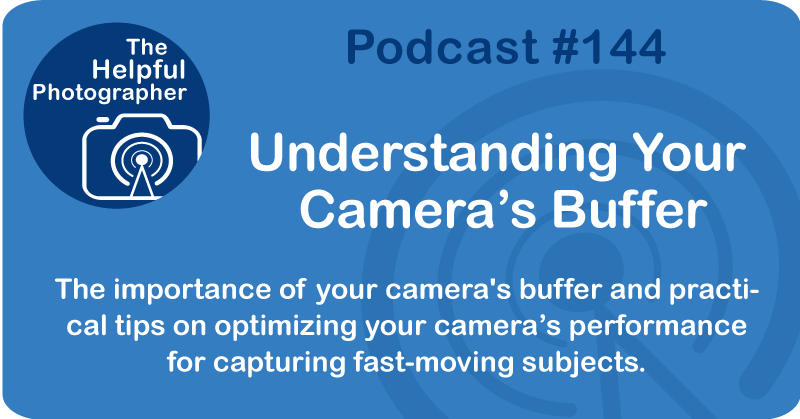Understanding Your Camera’s Buffer #144

The buffer. No, I'm not talking about that beefy guy down at the gym. I'm talking about your camera's memory. Your buffer is something that's often misunderstood but plays a crucial role in photography, especially in action photography or bracketing. If you've ever noticed a number inside your camera's viewfinder, especially if you're using a Canon, you might see something between five and 50. That number doesn't represent the space left on your memory card. Instead, it's the number of images available in your camera's buffer before it slows down or stalls out.
So, what is the buffer? It's your camera's internal memory. It's a temporary holding space for images before they are written to your memory card. For example, if your buffer can hold 20 RAW files and you're shooting in burst mode, once you hit that 20-image limit, the camera will pause until it can write some of those images to the memory card and free up space. With my last camera, I could capture about 14 frames before it stalled out. With my new mirrorless, I can shoot nearly 100 frames before hitting that limit.
So what does this mean on a practical level? Let's take bracketing as an example. When you shoot a 5-frame bracket, your camera will need to fire 5 shots for a single composition. If you're hand-holding, you'll want to use burst mode to capture them as quickly as possible. But with every new composition, it's another 5 frames. So after just 3 compositions, you might have hit your buffer limit, especially on older cameras, and you may need to pause for several seconds before shooting another frame. To avoid that, you could take a short pause between each bracket, allowing the camera to write images to the memory card. But if you're shooting fast-moving subjects like sports or animals, even a half-second pause could mean missing the shot.
Another key factor is the read and write speed of your memory card. Older cards with slower write speeds can create a bottleneck, making it harder for your camera to clear the buffer. That's why upgrading to a faster memory card is important, especially when you upgrade your camera. However, be careful with this. Using an outdated memory card with a new camera or vice versa could cause compatibility issues. Always check your camera manual to know which cards are supported.
If you're writing to two cards simultaneously, that can slow things down too. Not only because you're writing to two cards at the same time, but also because the write speed is determined by the slowest card that you have in the camera. And don't forget, the file size matters. Large RAW files can take much longer to write than JPEGs.
Aside from your cards, there's a new feature I want to mention. It's called pre-shooting and is now available in some mirrorless cameras. With pre-shooting, the camera starts capturing frames before you press the shutter button. So when you finally press the shutter button, the camera saves the images from the couple of seconds before you pressed it. For instance, let's say you're photographing a bird sitting on a branch, waiting for it to take off. Without pre-shooting, by the time you press the shutter, the bird might already be out of frame and you missed the shot. But with pre-shooting, the camera was already capturing those moments, increasing your chances of getting that perfect shot in flight.
And although pre-shooting has some serious advantages, you do need to keep in mind that pre-shooting requires a lot of buffer and actual memory space. So you might want to get the fastest cards your camera is capable of utilizing. And you may actually want to think about getting a larger card as well.










